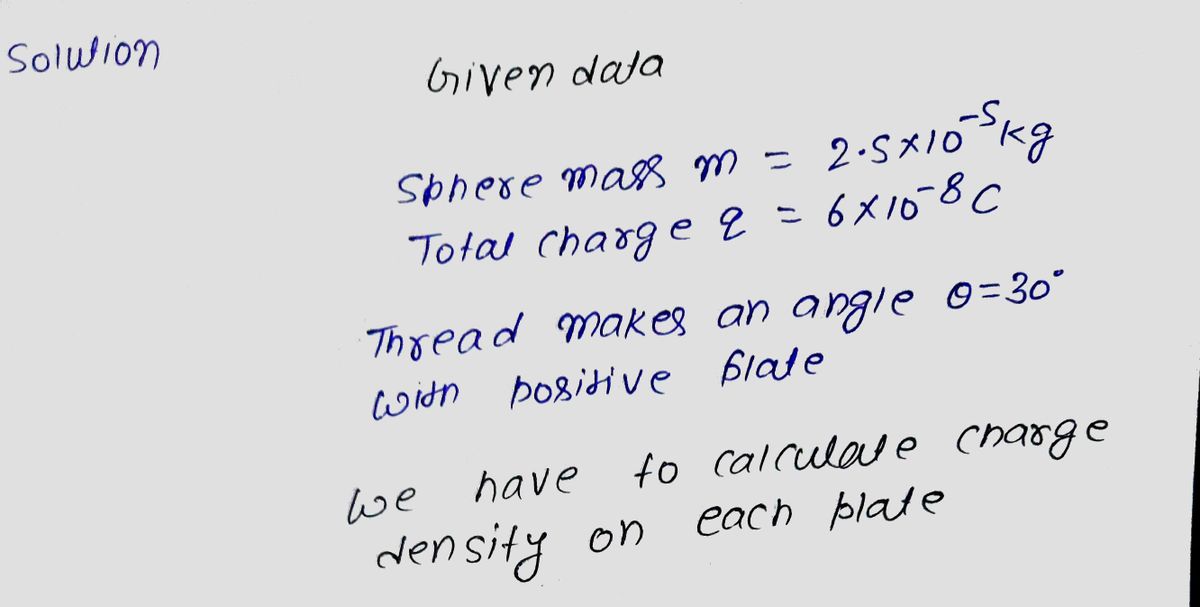1. A small sphere of mass 2.5 x 10 kg carries a total charge of 6.0 × 10 C. The sphere hangs from a silk thread between two large parallel conducting plates. The excess charge on each plate is equal in magnitude, but opposite in sign. If the thread makes an angle of 30° with the positive plate as shown, what is the magnitude of the charge density on each plate? Note: for a parallel plate capacitor E = each plate). 0/€o (electric field between plates and o is the surface charge density of 30°
1. A small sphere of mass 2.5 x 10 kg carries a total charge of 6.0 × 10 C. The sphere hangs from a silk thread between two large parallel conducting plates. The excess charge on each plate is equal in magnitude, but opposite in sign. If the thread makes an angle of 30° with the positive plate as shown, what is the magnitude of the charge density on each plate? Note: for a parallel plate capacitor E = each plate). 0/€o (electric field between plates and o is the surface charge density of 30°
Related questions
Question

Transcribed Image Text:1. A small sphere of mass 2.5 x 10 kg carries a total charge of 6.0 x 10C. The sphere hangs
from a silk thread between two large parallel conducting plates. The excess charge on each plate
is equal in magnitude, but opposite in sign. If the thread makes an angle of 30° with the positive
plate as shown, what is the magnitude of the charge density on each plate? Note: for a parallel
plate capacitor E =
each plate).
o/eo (electric field between plates and o is the surface charge density of
30
+.
Expert Solution
Step 1

Trending now
This is a popular solution!
Step by step
Solved in 3 steps with 3 images
